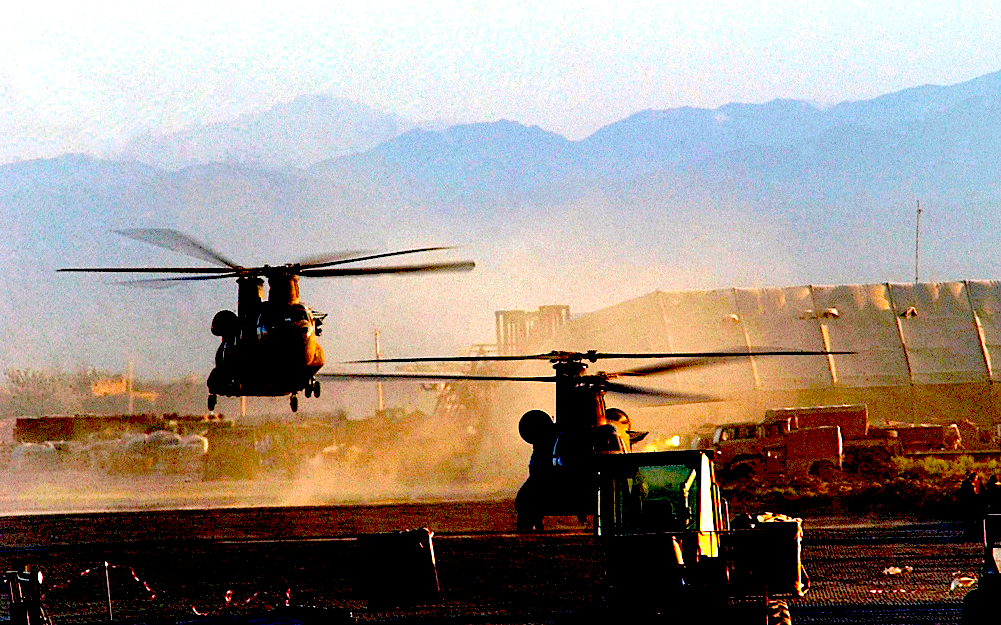Investors in US Weapon-Makers Only Clear Winners of Afghan War
Share prices of military manufacturers vastly outperformed the stock market overall during the Afghanistan War.

May 25, 2002: Two U.S. Army CH-47 Chinook helicopters land at Bagram Airfield in Parwan, Afghanistan, after completing a mission. (U.S. National Archives)
As the hawks who have been lying about the U.S. invasion and occupation of Afghanistan for two decades continue to peddle fantasies in the midst of a Taliban takeover and American evacuation of Kabul, progressive critics on Tuesday reminded the world who has benefited from the “endless war.”
“Entrenching U.S. forces in Afghanistan was the military-industrial complex’s business plan for 20+ years,” declared the Washington, D.C.-based advocacy group Public Citizen.
[Related: A People’s Guide to the War Industry, Part 1 and Part 2 and Part 3 and Part 4 and Part 5.]
“Hawks and defense contractors co-opted the needs of the Afghan people in order to line their own pockets,” the group added. “Never has it been more important to end war profiteering.”
In a Tuesday morning tweet, Public Citizen highlighted returns on defense stocks over the past 20 years — as calculated in a “jaw-dropping” analysis by The Intercept — and asserted that “the military-industrial complex got exactly what it wanted out of this war.”
The Intercept‘s Jon Schwarz examined returns on stocks of the five biggest defense contractors: Boeing, Raytheon, Lockheed Martin, Northrop Grumman, and General Dynamics.
Schwarz found that a $10,000 investment in stock evenly split across those five companies on the day in 2001 that then-President Georg W. Bush signed the authorization preceding the U.S. invasion would be worth $97,295 this week, not adjusted for inflation, taxes, or fees.
According to The Intercept:
“This is a far greater return than was available in the overall stock market over the same period. $10,000 invested in an S&P 500 index fund on September 18, 2001, would now be worth $61,613.
…click on the above link to read the rest of the article…